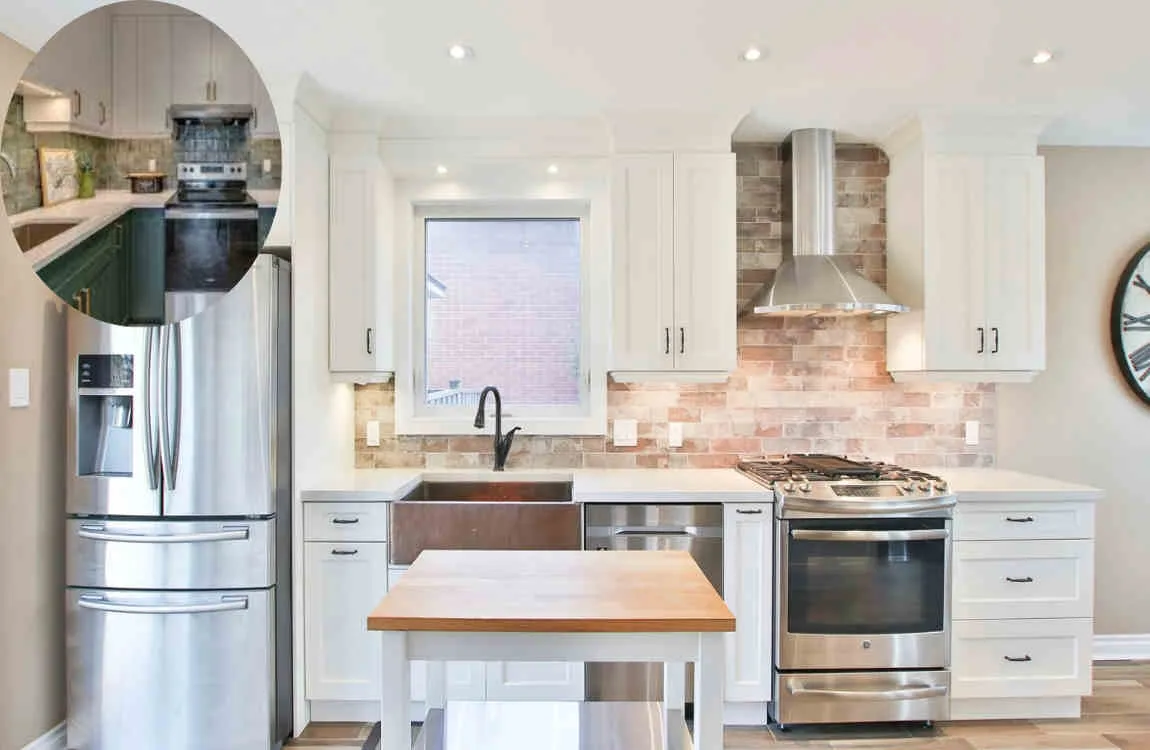If you’ve ever wondered, “whats a spice kitchen?”, you’re in the right place. A spice kitchen is a special cooking area designed for handling bold, aromatic, and often spicy dishes without overwhelming the central home kitchen or living spaces. This concept has been a part of traditional homes worldwide for centuries, but is now gaining popularity in modern house designs.
What’s a Spice Kitchen? Defining the Concept

A spice kitchen is a separate or semi-separated cooking area dedicated to preparing dishes rich in spices, oils, and intense aromas. Unlike a regular kitchen, it’s designed to handle intense cooking methods like frying, sautéing, and roasting with heavy spices, minimizing smoke, smell, and mess in the rest of the home.
Historical and Cultural Roots
Spice kitchens have deep roots in many cultures. In South Asia, traditional homes often have a separate kitchen space to manage the pungent smells of curries and fried snacks. Similarly, Middle Eastern and Latin American cultures have culinary spaces explicitly designed for bold spices and flavors. These kitchens have evolved not only out of practicality but also as a cultural expression of food preparation and cooking.
- Ventilation: Spice kitchens often feature stronger exhaust systems to control smoke and odors effectively.
- Materials: Surfaces are often heat and stain-resistant to handle intense cooking.
- Location: Sometimes located outdoors or away from the main living areas.
- Usage: Primarily for heavy, spice-laden cooking, while the central kitchen is for lighter, everyday meals.
Why Spice Kitchens Matter
They’re not just about smells. Spice kitchens keep your home cleaner, protect indoor air quality, and preserve the delicate aromas of spices. Plus, they allow cooks to experiment freely without worrying about lingering odors or grease buildup.
Key Features of a Spice Kitchen
Layout and Design Considerations
A spice kitchen needs space for robust cooking methods. Its layout typically includes:
- More counter space for prep and heavy cooking.
- Easy access to storage for spices and oils.
- Durable flooring and walls to withstand heat and stains.
Essential Elements
- Ventilation: Powerful exhaust fans and possibly windows for fresh air.
- Durable Surfaces: Tiles or stainless steel counters resist stains and heat.
- Heat Resistance: Cookware and surfaces that can handle high temperatures without damage.
Storage Solutions
Proper storage keeps spices fresh and organized. Airtight jars, spice racks, and labeled containers make the kitchen efficient and visually appealing.
Heavy-Duty Cookware and Equipment
Spice kitchens often require durable pans, woks, and deep fryers designed for high-heat and oil-heavy cooking. This equipment supports traditional cooking techniques and preserves flavor.
Why You Need a Spice Kitchen in Your Home

Health and Hygiene Benefits
Cooking spicy and oily dishes can produce a lot of smoke and splatter. A spice kitchen helps:
- Control smoke and odors to keep the air clean.
- Reduce grease buildup in your central kitchen and living areas.
- Maintain better hygiene by localizing mess.
Enhancing the Cooking Experience
You get to focus on flavors without worrying about the aftermath. It’s easier to experiment with bold recipes when you know cleanup is manageable.
Practicality for Spicy and Oil-Heavy Cooking Styles
If you love cuisines like Indian, Thai, or Mexican, a spice kitchen is perfect for you. It supports cooking with intense spices and oils without compromising the rest of the home.
Boosting Home Value and Appeal
For food lovers and future buyers, a spice kitchen is a unique feature that adds value and appeal. It shows that your home is designed for serious cooking.
How to Design and Build Your Own Spice Kitchen
Step-by-Step Planning Guide
- Assess your cooking needs: What kinds of dishes do you prepare?
- Choose location: Indoor, outdoor, or semi-open spaces work well.
- Plan ventilation: Consider exhaust fans, windows, or open walls.
- Select materials: Durable, heat-resistant, and easy to clean.
- Design storage: Plan racks, shelves, and containers for spices.
- Budget: Decide what you can do DIY and when to hire pros.
Choosing the Right Location
Outdoor spice kitchens are great for ventilation but require weatherproof materials. Indoor spice kitchens should be placed away from living rooms or bedrooms to reduce odor spread.
Materials and Finishes
Popular choices include ceramic tiles, stainless steel, stone countertops, and waterproof paints. These materials make cleaning easier and withstand heat and spills.
Ventilation and Lighting
Good light is essential for cooking and safety. Combine natural light with task lighting. Install heavy-duty exhaust systems to keep the air fresh.
You may also read (should you paint the inside of cabinet doors in your home).
Budgeting Tips and Hiring Professionals
Simple spice kitchens can be affordable DIY projects, but complex ventilation and plumbing might require experts. Always get quotes and plan for unexpected costs.
Must-Have Appliances and Tools for a Spice Kitchen
Recommended Appliances
- High-powered exhaust hood
- Heavy-duty stove or gas burner
- Deep fryer or tandoor (if relevant)
- Microwave and oven for versatile cooking
Specialty Cooking Tools
- Woks and large frying pans
- Spice grinders and mortars
- Oil dispensers and splatter guards
Smart Storage for Spices
- Airtight glass jars with labels
- Rotating spice racks
- Magnetic spice tins for easy access
Safety Equipment
- Fire extinguisher
- Heat-resistant gloves
- Non-slip mats for floor safety
Cooking Techniques Best Suited for Spice Kitchens
Enhanced Cooking Styles
Spice kitchens excel with:
- South Asian curries and stir-fries
- Middle Eastern grills and slow-cooked dishes
- Latin American fried and roasted recipes
Managing Strong Spices and Heat
Use lids, splatter guards, and exhaust fans to keep smells controlled. Open windows help freshen the space quickly.
Cleaning Tips
- Clean spills immediately to avoid stains.
- Wipe down surfaces daily.
- Deep-clean exhaust fans monthly to maintain efficiency.
Common Challenges and How to Overcome Them
Challenge Problem Description Solution
Strong odors, lingering smells after cooking. Use robust exhaust systems and air purifiers.
Smoke buildup affects home air quality. Install multiple ventilation points.
Grease and mess. : Difficult-to-clean surfaces. Choose stain-resistant materials and clean often.
Design mistakes, Including Poor layout, can cause cramped spaces or airflow issues. Plan carefully with a professional if needed.
Spice Kitchen Inspirations: Real Home Examples
Many homes around the world feature spice kitchens, each reflecting cultural tastes:
- Indian homes often have open-air spice kitchens with clay stoves.
- Middle Eastern kitchens use grills and charcoal ovens outdoors.
- Latin American homes might have outdoor kitchens with tiled counters and wood-fired ovens.
You can find inspiration on design websites, cooking blogs, or social media platforms showcasing flavorful cooking spaces.
Yes, with added ventilation, durable surfaces, and better storage, your home kitchen can become a spice kitchen.
Costs vary widely depending on size, materials, and appliances—typically between a few hundred and several thousand dollars.
Not always, but compact spice kitchen setups or vented cooking stations can work well in smaller spaces.
Regular cleaning, using stain-resistant materials, and maintaining exhaust fans are key to upkeep.
You may also read (how to transform your home backyard into a functional outdoor kitchen).




